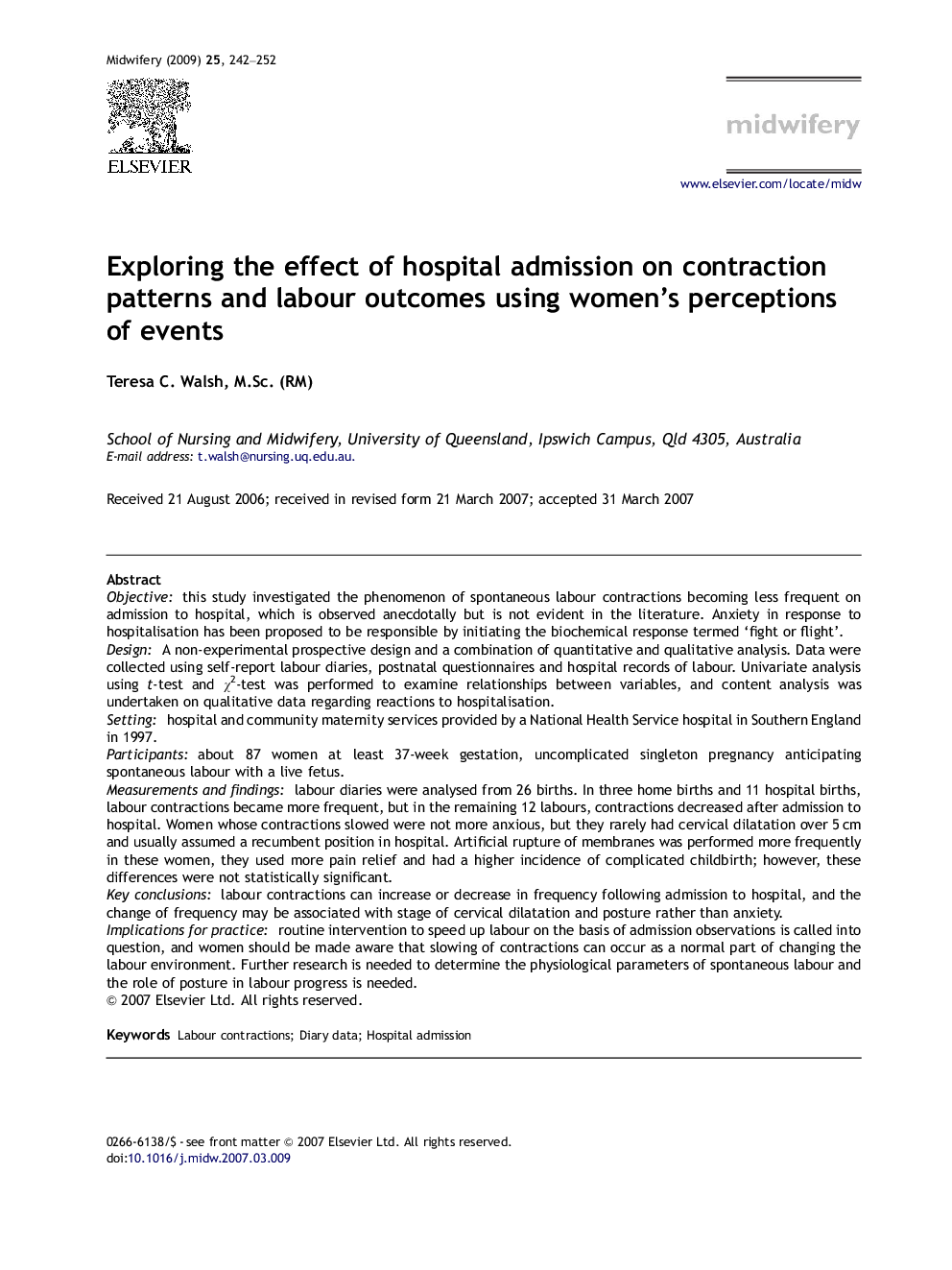| Article ID | Journal | Published Year | Pages | File Type |
|---|---|---|---|---|
| 1085381 | Midwifery | 2009 | 11 Pages |
Objectivethis study investigated the phenomenon of spontaneous labour contractions becoming less frequent on admission to hospital, which is observed anecdotally but is not evident in the literature. Anxiety in response to hospitalisation has been proposed to be responsible by initiating the biochemical response termed ‘fight or flight’.DesignA non-experimental prospective design and a combination of quantitative and qualitative analysis. Data were collected using self-report labour diaries, postnatal questionnaires and hospital records of labour. Univariate analysis using t-test and χ2-test was performed to examine relationships between variables, and content analysis was undertaken on qualitative data regarding reactions to hospitalisation.Settinghospital and community maternity services provided by a National Health Service hospital in Southern England in 1997.Participantsabout 87 women at least 37-week gestation, uncomplicated singleton pregnancy anticipating spontaneous labour with a live fetus.Measurements and findingslabour diaries were analysed from 26 births. In three home births and 11 hospital births, labour contractions became more frequent, but in the remaining 12 labours, contractions decreased after admission to hospital. Women whose contractions slowed were not more anxious, but they rarely had cervical dilatation over 5 cm and usually assumed a recumbent position in hospital. Artificial rupture of membranes was performed more frequently in these women, they used more pain relief and had a higher incidence of complicated childbirth; however, these differences were not statistically significant.Key conclusionslabour contractions can increase or decrease in frequency following admission to hospital, and the change of frequency may be associated with stage of cervical dilatation and posture rather than anxiety.Implications for practiceroutine intervention to speed up labour on the basis of admission observations is called into question, and women should be made aware that slowing of contractions can occur as a normal part of changing the labour environment. Further research is needed to determine the physiological parameters of spontaneous labour and the role of posture in labour progress is needed.
